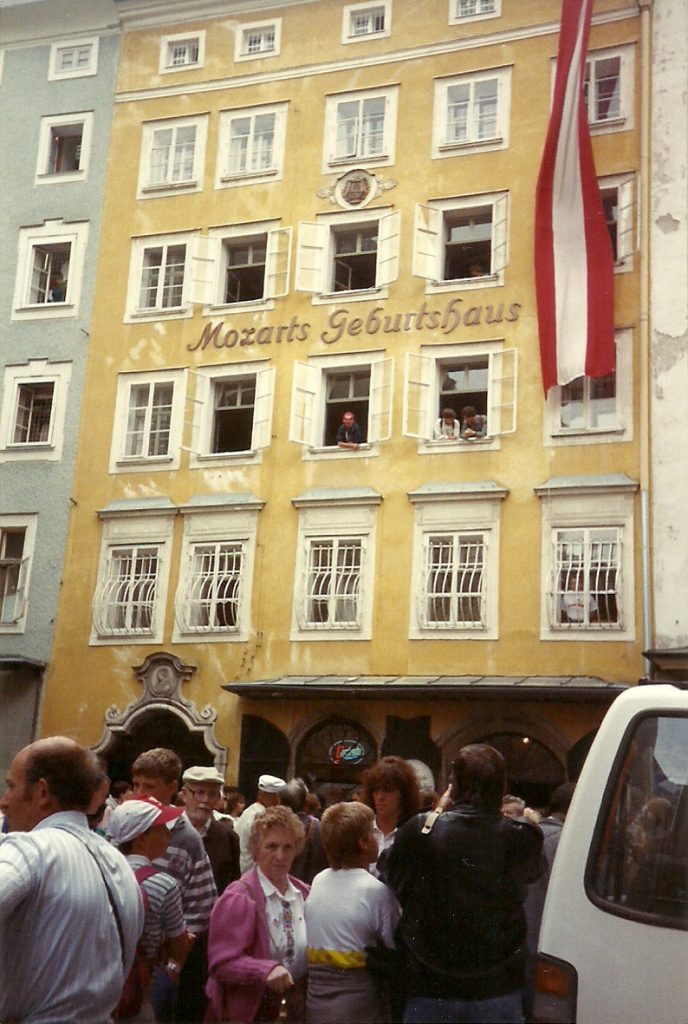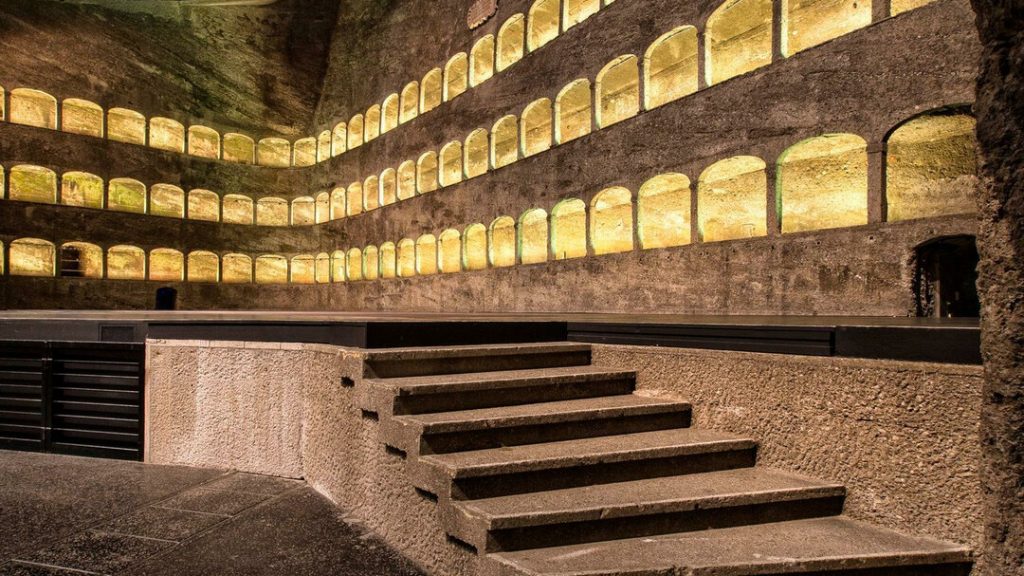The Year 1995 – Part Two

In the previous blog post, I intimated that the year 1995 was a good, but not exceptional year, and that the post would be relatively brief. Boy, was I wrong! Not that it was a particularly long post, but it turned out that 1995 was more interesting than I remembered. One of my problems with recalling this year was that I did not keep up my journal for most of 1995, and in some respects, I was “flying blind”, so to speak. Up until 1995, I had a lot of journal entries to assist my memory and it was much easier to talk about events of that period.
In talking about 1995, I had to really rack my memory, and I was surprised at how much I was able to recall, even without the wealth of detail that I would like to have added. So that blog post was longer than I had originally intended, which is why I have divided the year into two parts. I believe I left off with our quick trip to Harstad, Norway. This was followed up by the annual Holmenkollen Summer Concert, and then it was vacation time. My family and I choose the summer of 1995 for one of our periodical trips to the United States, and this trip was extensive. We literally spent the summer in our home country, and visited such interesting places such as Amish country in Lancaster, PA, Hershey Park, Huntsville, Alabama (where we visited my mentor Dan Hinger and his wife as well as Space Camp USA), Orlando, Florida- United Artists Studios – Daytona Beach, as well as our respective families. It was a memorable trip, and at the end of it, I was ready to get back to the orchestra, refreshed and invigorated as one usually is at the beginning of a new season.
Salzburg and the BBC Proms
As with previous seasons, it was becoming more and more common for us to undertake a festival tour during the later part of the summer, and 1995 was no exception. If memory serves, the festival tour in 1995 focused on the Salzburg Festival and the BBC Proms. From what I can piece together, we actually undertook two separate “mini-tours”. The first involved a pair of concerts at the Salzburg Festival on the 5th and 6th of August, and the other a quick trip to London for an appearance at the BBC Proms on the 12th. Normally, we would try to get as many concerts into a tour as possible, but this was not possible at the time, so we made the best of it and I must say, the results were up to our usual standard. Both uf our concerts at the 1995 Salzburg Festival took place not at the Festspielhaus, but at the Felsenreitschule. (The Festspielhaus was not available.) This venue was made famous by the 1965 film adaption of “The Sound of Music.” The Felsenreitschule was used to shoot the scenes of the Von Trapp Family’s Festival appearance – and from where they supposedly escaped the clutches of German officials waiting to escort Georg von Trapp (played by Christopher Plummer) to his new post in the Reichsmarine. It is essentially an outdoor theater with the stage built into a galleried mountain backdrop. That is the only way I could describe it. The galleries rise several levels high, and the artists entrance is a tunnel opening onto stage right. I remembered it from the movie, and when we played there in 1995, it looked remarkably unchanged from the sixties. Luckily, the weather cooperated and the program was well-received. We opened with music of the Norwegian composer, Magnar Åm – his Study on a Norwegian Hymn for string orchestra, followed by Richard Strauss’s Also Sprach Zarathusthra. After intermission, the concert concluded with the Second Symphony of Jean Sibelius.

It was quite a pleasant experience and as I noted earlier, the weather cooperated. It was not too hot, and not chilly, either. The audience appreciated our efforts, and I can say I actually played on of the “sets” of the movie “Sound of Music”.
The second concert took place the next day, August 6th, also at the Felsenreitshule. It opened with Claude Debussy’s La Mer and was followed by Bruch’s Violin Concerto in G minor with Julian Rachlin as soloist, and Dvorak’s Symphony No. 8 in G major, Op. 88 closed the program. It was a fun program – plenty for all of us to do, and if memory serves, the weather was a carbon-copy of the previous balmy evening, and the concert came off equally well. We returned to Oslo after the concerts, and it was only a few days later that we flew to the UK and arrived in London for our concert appearance at the BBC Proms. There was to be only once concert at this time. It was a repeat of the August 5th concert in Salzburg – Magnar Åm – Study on a Norwegian Hymn for string orchestra; Richard Strauss: Also Sprach Zarathusthra, and the Second Symphony of Jean Sibelius. From what I can recall, this concert was also well received. Despite the huge size of the Royal Albert Hall, I had always found the acoustics to be more than acceptable – it was actually easier for the the members of the orchestra to hear each other on stage than back in Oslo. I always enjoyed the spirit of the Proms audiences – fun-loving, but ready (indeed anxious) to listen to a evening of good music making. I believe we repeated our second Salzburg program – Debussy’s La Mer, Bruch: Violin Concerto (with Julian Rachlin) and Dvorak’s Symphony No. 8 in Harrogate. This is the problem with not keeping up one’s journal-memories after so many years become somewhat sketchy.
A Memorable Tea
If memory serves, I believe it was on this tour that I enjoyed a most memorable experience. I believe we played a concert in Harrogate, located in North Yorkshire and had some free time there. The husband of one of the women who were active in the Friends of the Oslo Philharmonic was a former officer in the Indian Army – this was before the partition of India, in the final days of the British Raj. His name was Walter Tulip, and he was about my father’s age. I met with him and his wife Genevieve Jones many times in Oslo and we had struck up a friendship over the years. Now that I was on his home ground, he was kind enough to show me around the area, and North Yorkshire was quite the area. He picked me up at the otel, and we drove first to an old Anglican church which dated from the British Civil War. It was an exquisite old church, with carved choir stalls and a small organ – it was not a large church and it was built of stone. Walter showed me several places in the walls where there were bullet holes from the Cromwellian era – Living History indeed! It was incredible to actually see a relic of that era. It is one thing to read about it in the history books, but quite another thing to actually experience it. We then drove through the country – quite beautiful – and then stopped in at an old manor house for “high tea.” The manor house was quite large, and had been the manor house of one of the aristocracy, but it had been sold and was now used as a resort. However, the traditions of the house were kept up, and their high tea was superb. As I don’t drink coffee or tea, hot chocolate was an excellent substitute and was it delicious! Real whipped cream on top, and their scones were size of croquet balls! Yummy! They served every sort of sandwich available on freshly baked bread and real butter! It was an experience that I will never forget. Walter and I continued our conversation over this scrumptious meal – and it was a meal – don’t let the term “high tea” fool you!
An Interesting Tour to the UK…and Dublin!
I am going to pass over our recording sessions of the Respighi tone poems that we did for EMI in October of 1995 and go straight into the final months of 1995. The highlight was a brief tour of the United Kingdom…and Dublin, Ireland, no less. The conductor for the tour was Paavo Berglund, one of the orchestra’s favorite conductors at that time, and he conducted us in two programs. One of the programs was built around Carl Nielsen’s Symphony No. 1 in G minor, and the other was built around Sibelius’s Symphony No. 1. I do know that we played several concerts in the UK – London and Nottingham come to mind – and they were fairly well received. Then it was on to Dublin, Ireland – a first for the orchestra, and as it turned out, as of this date, it was the last time we played there. The concert almost did;t happen – due to the lateness of the instrument transport read trucks or “lorries”) in reaching the ferry terminal – they had to cross over the Irish Sea by ferry – they were denied entry to the last departing ferry for the evening and had to wait until morning to catch the next ferry for Ireland – and they had quite the drive to get to Dublin. In the event, our instrument van made it just in time, but our concert clothes did not. After several meetings with the conductor, administration, and the host venue, it was decided to make the concert an informal event. Groups of instrumentalists from the orchestra improvised an impromptu chamber music event for the first half, and the second part of the concert was devoted to Sibelius’s First Symphony under Paavo Berglund. We played the concert – such as it was – in street clothes. When I said our instruments arrived just in time – theat meant everything but the timpani and percussion. The National Orchestra of Ireland lent us the use of their instruments. I played on a well-kept set of Premier timpani with clear heads. It was an interesting sound, and a good experience to play a concert on strange instruments with only a moment’s notice. The audience seemed to appreciate the concert – I met up with some friends living in Ireland at the time, and they told me that they enjoyed it very much. However, in the event, not much was said in the local press, and as I have stated earlier – the orchestra hasn’t been back since. Nonetheless, it was quite the experience.
A little Respighi…
I mentioned earlier that we had recording sessions in October of 1995, in which the the other two parts of Respighi’s Roman Trilogy were recorded. These were the Pines of Rome and the Fountains of Rome. I had described these in an earlier blog post, so I won’t go into detail here, but I thought that I’d end this post with a musical tidbit from of the parts of the Trilogy, Here, from the Fountains of Rome is the Trevi Fountain. Enjoy.

Recent Comments